How to clean the toilet bowl from rust and plaque?
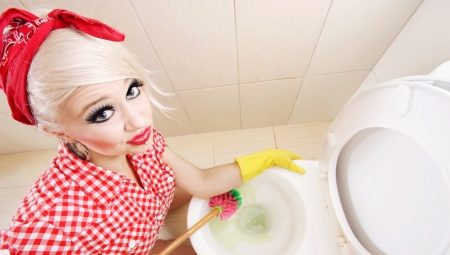
Every self-respecting housewife keeps the bathroom clean, carefully removing rusty smudges and limescale from the toilet bowl. Often this painstaking work takes a lot of time, and therefore it's time to learn how to clean the toilet bowl from rust and plaque quickly and for a long time, saving time for more pleasant chores.
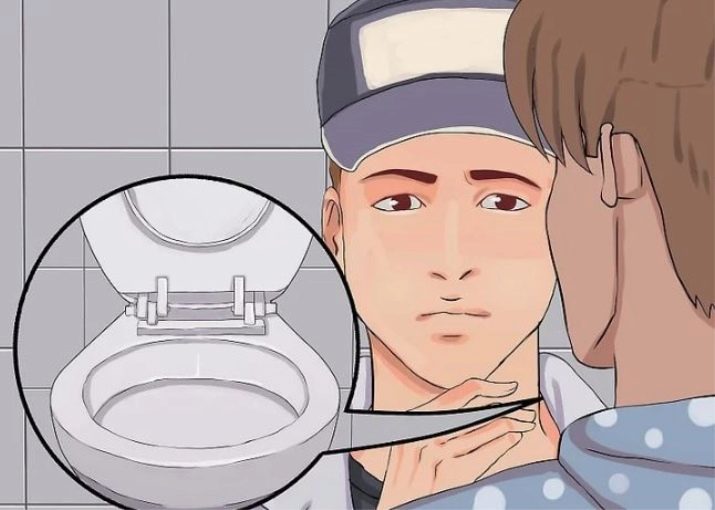
Causes of rust and lime
You must admit that a dirty toilet is disgusting for each of us, and in fact, more often than not, we ourselves are to blame for its neglect. The main reasons for the appearance of stains and smudges:
- water quality;
- old pipes;
- malfunction and constant leakage of the tank;
- high level of roughness of the toilet;
- lack of water-repellent coating;
- a large amount of calcium salt in the water;
- uncleanliness of households.
Rust and limescale have different causes. So, excessively hard water with an excess of iron will certainly cause traces. This situation will worsen if the tank leaks. And if an excess of iron leads to rust, then an excess of calcium salt in the water will certainly lead to limescale accumulating at the rim of the toilet bowl.
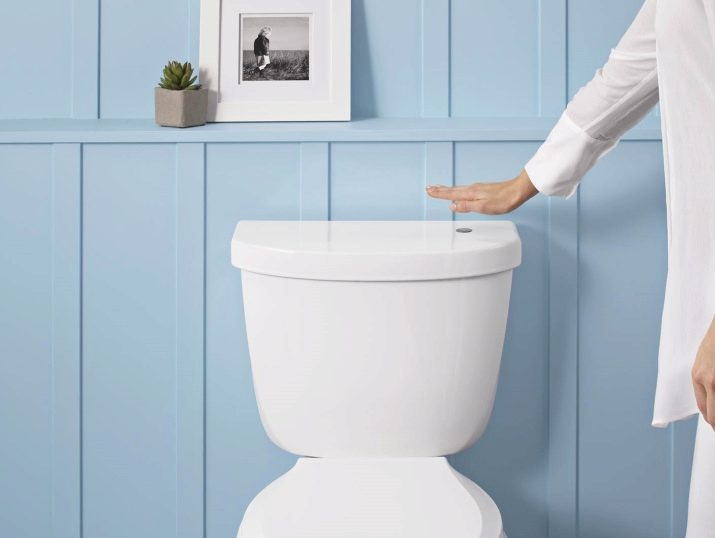
However, the very purchase of a toilet can already become the reason for the rapid appearance of stains. A rough version without a water-repellent coating and improper cleaning will quickly lead to scratches and clogging in them with dirt, rust and lime. The reason, rooted in the untidiness of the household, can gradually lead to serious and difficult to remove stains from urinary stones.
You can avoid its appearance if you introduce a habit in the family of flushing after each trip to the toilet or pouring out the pot by children.
Cleansing methods
It is important to wash and clean any dirt on the toilet as soon as possible. The fact is that it is very difficult to wipe off the ingrained rust without harming the coating of the bathroom. Cleansing at home can be done by a variety of methods, most of which are as accessible and effective as possible.
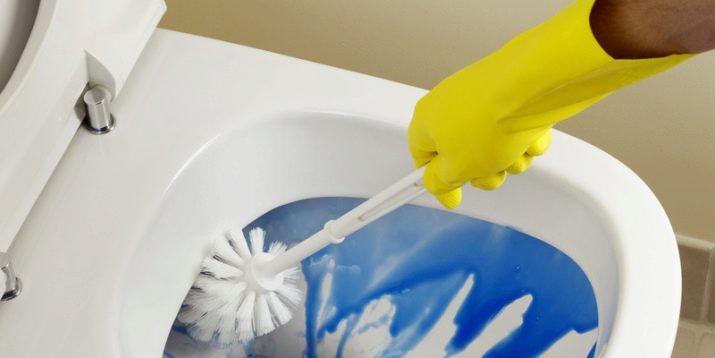
Household chemicals
It is easy to get confused in the offered toilet cleaning products today, being lost in the widest assortment. In fact, each of them belongs to one of four groups, created on the basis of differences in composition. Types of products for combating limescale and rust:
- alkaline;
- powder;
- acid-based;
- based on chlorine.
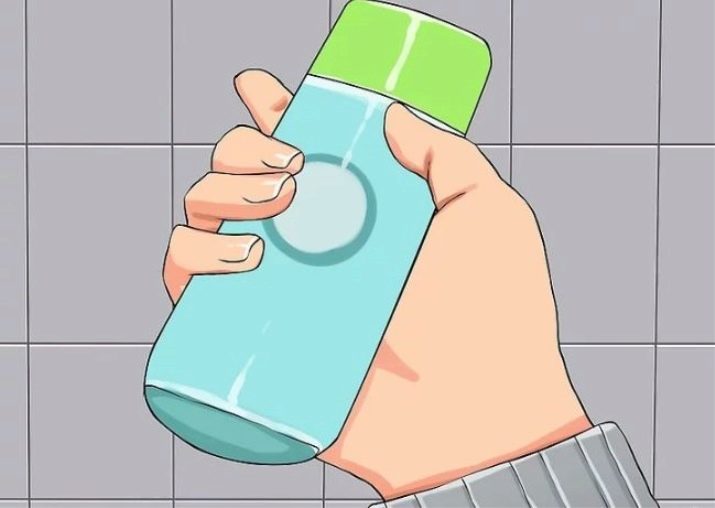
It is recommended to give preference here to gel-like and balm-like textures.... They are able to provide not only high-quality, but also safe cleaning without damaging the toilet bowl cover. Alkaline products include all products from plaque and rusty smudges, created on the basis of sodium. They are considered absolutely safe products with ease of use and a high degree of effectiveness. Among the well-known brands are the Dosya and Bref products.
Powder formulations are among the most powerful in their action. So, they are practically the only ones in whose power to cope with urinary stones. Using a stiff brush, the powder is rubbed into the surface, on the one hand, removing difficult stains, and on the other, creating microcracks for future accumulation of dirt. That is why drugs such as Pemolux and Flash should be used only in extreme cases. Chlorine-based products are also suitable for DIY toilet stain removal. Applying it from the inside, you can see how the plaque literally slides down, and the surface is disinfected.
Unfortunately, bleach and chlorine-containing products have a pungent odor, which leads some users to turn to improved products. This category includes the means "Comet" and "Silit".
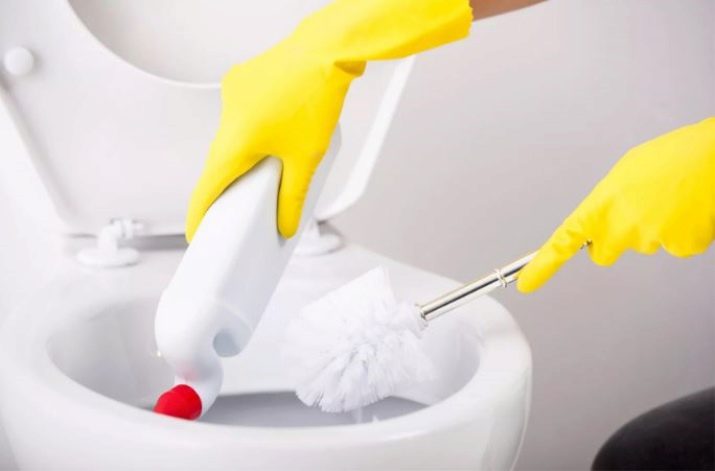
Funds based on oxalic, formic, hydrochloric and other acids are not inferior in cleansing with bleach. Products such as "Santry "or" Dressing duck " do not have pungent odors, however, with prolonged use, they can negatively affect human health. Such products should be used periodically, not forgetting to prohibit their use when washing earthenware and ceramic toilets.
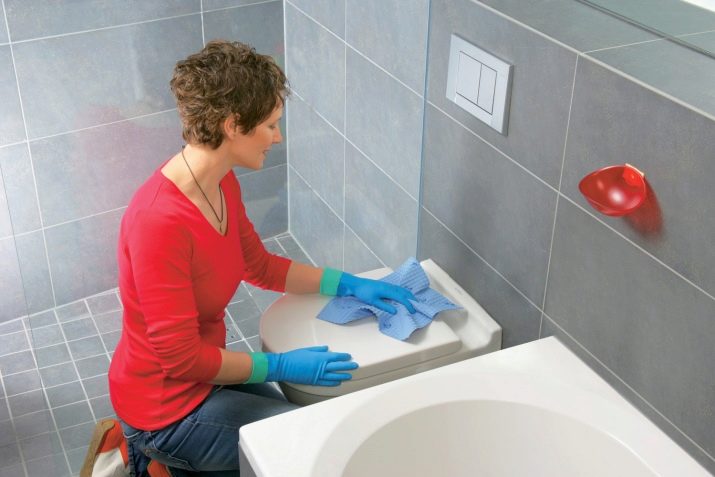
Folk remedies
As you can see, most of the ready-made cleaning products have certain restrictions on their use. Some housewives avoid such difficulties, deliberately using only folk sparing remedies in cleaning:
- so, one of the popular methods of washing is a solution of iodine with vinegar. A small container is filled with vinegar, a few drops of iodine and a pinch of baking soda. The solution is thoroughly mixed and applied to the surface to be cleaned for 6-8 hours, and then washed off with clean water;
- an interesting and popular method is to pour Coca-Cola into the toilet or cistern. Yes, exactly the drink that all children love without exception. Leaving the solution overnight, in the morning the bathroom is rinsed with water;
- according to the same principle, citric acid and soda are used in cleansing. One or another product is poured onto the contaminated surface and left to act overnight. In the morning, the product is washed off with water or rinsed thoroughly if cleaning took place from the inside of the tank;
- hydrogen peroxide in tandem with ammonia can be a good alternative to store products. The proportion is 5 ml of ammonia per 100 ml of peroxide. The solution is qualitatively applied to the surface and kept for about half an hour, after which it is cleaned with a medium-soft brush and washed off.
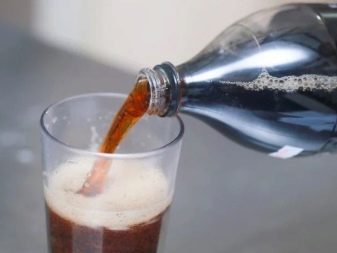
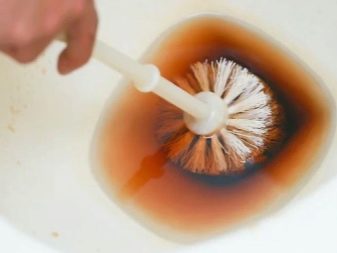
It is worth noting that traditional methods also have acids in their compositions. So, for cleaning in pure form, oxalic and hydrochloric acids can be used.As mentioned earlier, the method is not the safest, and therefore it is important to work in advance armed with durable gloves and a respirator. Inhaling such compounds is extremely harmful.
I must say that ready-made and folk remedies are equally effective, however, those who want to get a quick result still turn to purchased products, because hardly any of them requires standing at night.
How to prevent rust and plaque build-up?
The appearance of rust can and should be prevented, especially since it is quite easy to do. So, first of all, the owners of the apartment should establish a toilet float and completely eliminate the constantly running thin stream of water. Even hard water with a well-adjusted bathroom will have a much lesser effect on the appearance of rust and limescale. It should be noted that Replacing old rusty pipes will also help to fill the cistern with clean water, free of excess impurities.
Unfortunately, not everyone decides to take such a time-consuming step, but when done, the result pays for all the time and money spent.
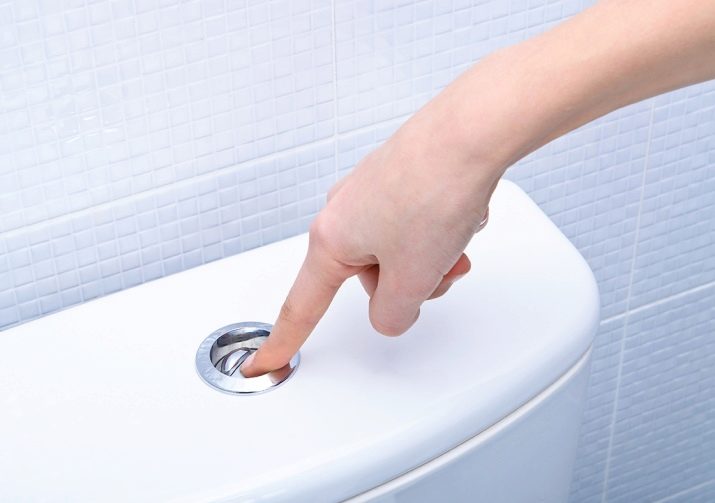
If replacing the pipes is still not part of the plans, softening tablets placed daily inside the tank will help to improve the condition of the water. Additionally, such products envelop the bathroom with pleasant aromas, which plays an important role. A more capital method is the installation of a water filter in the drain structure. It is not cheap, but when it is used, purification of water ceases to be a daily procedure with the participation of a housewife.
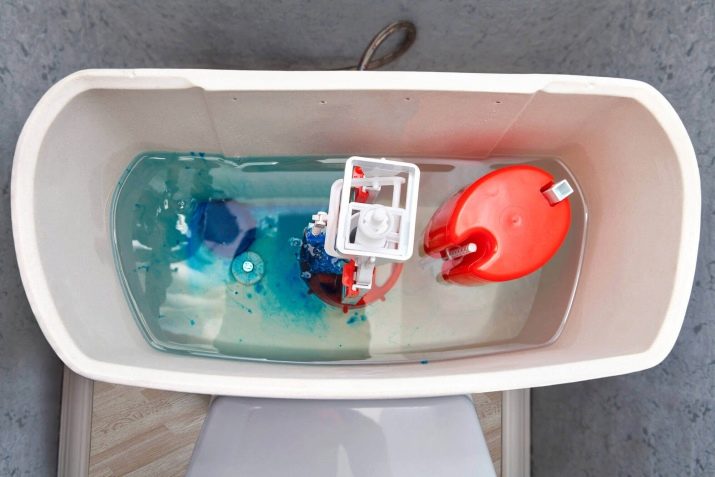
Sometimes, even if all the recommendations and preventive measures are followed, the bathroom continues to quickly accumulate rust and plaque. Most likely, the problem here lies in improper cleaning sometime in the past, because a stiff brush, after several uses, can thoroughly spoil the coating. If the scratches are visible to the naked eye, the best solution would be to replace the plumbing and carefully follow the rules for cleaning it. A high-quality toilet bowl untouched by potent agents can serve, pleasing with cleanliness and aesthetics, for more than a decade.
For more information on how to quickly and effectively clean the toilet, see the next video.








